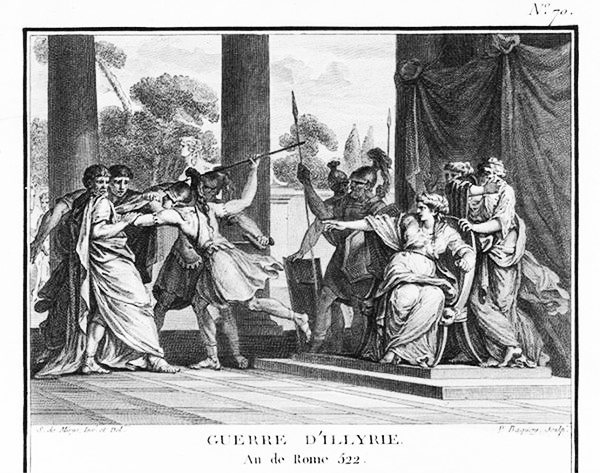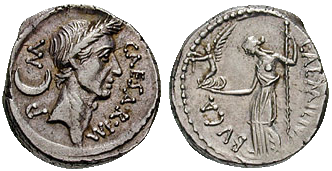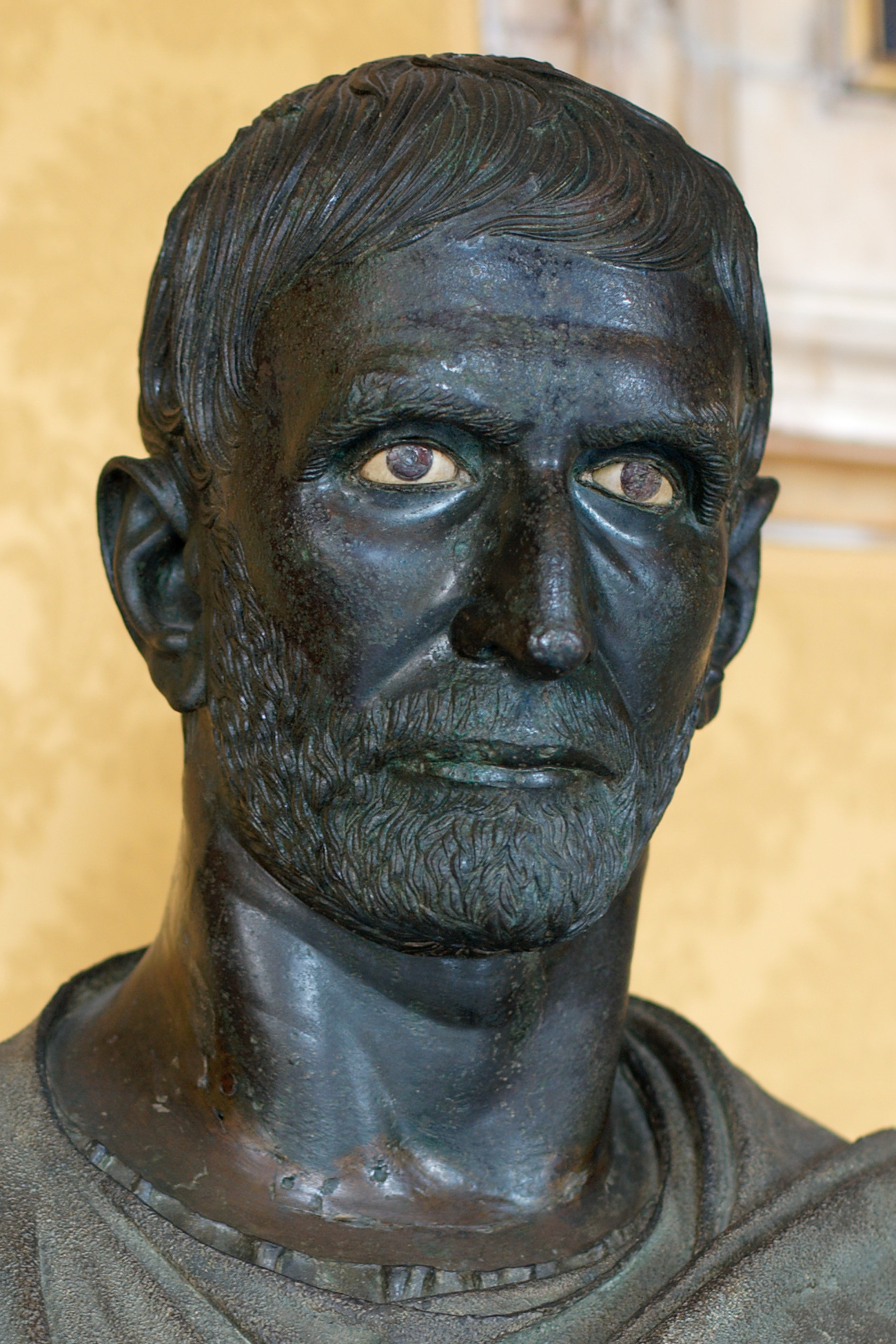|
Bassania
Bassania was an Illyrian city that came under Roman control during the Illyrian Wars. It was located close to the ancient city of Lissus in southern Illyria, modern Albania. The inhabitants of the city were called ''Bassanitae''. The time when the Bassanitae became '' socii'' of the Romans is still unknown. Location Carl Patsch identified Bassania with the village of Pedhanë or Pllanë on the river Mat entering the plain. A recent discovery in modern Bushat village within the Shkodër County suggests an alternative possible location of Bassania in this site. The ruins of the ancient city in Bushat extended in a surface three times of the ancient ruins of Shkodër (nearest city), massive stone walls surrounded an area of about 20 hectares, were discovered by a team of Polish-Albanian Archaeologists in 2018. The city wall is massive. Measuring 3 meters thick, the wall is made from huge stone blocks packed tightly against each other. In between the stone blocks are earth and ... [...More Info...] [...Related Items...] OR: [Wikipedia] [Google] [Baidu] |
Illyrian Wars
The Illyro-Roman Wars were a series of wars fought between the Roman Republic and the Ardiaei kingdom. In the ''First Illyrian War'', which lasted from 229 BC to 228 BC, Rome's concern was that the trade across the Adriatic Sea increased after the First Punic War at a time when Ardiaei power increased under queen Teuta. Attacks on trading vessels of Rome's Italic allies by Illyrian pirates and the death of a Roman envoy named Coruncanius on Teuta's orders,Zock, 99. prompted the Roman senate to dispatch a Roman army under the command of the consuls Lucius Postumius Albinus and Gnaeus Fulvius Centumalus. Rome expelled Illyrian garrisons from a number of Greek cities including Epidamnus, Apollonia, Corcyra, Pharos and established a protectorate over these Greek towns. The Romans also set up Demetrius of Pharos as a power in Illyria to counterbalance the power of Teuta.Eckstein, 46–59. The ''Second Illyrian War'' lasted from 220 BC to 219 BC. In 219 BC, the Roman Republic was at ... [...More Info...] [...Related Items...] OR: [Wikipedia] [Google] [Baidu] |
List Of Settlements In Illyria
This is a list of settlements in Illyria founded by Illyrians (southern Illyrians, Dardanians, Pannonians), Liburni, Ancient Greeks and the Roman Empire. A number of cities in Illyria and later Illyricum were built on the sites or close to the sites of pre-existing Illyrian settlements, though that was not always the case. Some settlements may have a double entry, for example the Ancient Greek Pola, Roman Pietas Julia, and some toponyms are reconstructed. Albania Identified sites Unidentified sites Bosnia and Herzegovina Identified sites Unidentified sites Croatia Identified sites Unidentified sites Kosovo Identified sites Unidentified sites Montenegro Identified sites Unidentified sites North Macedonia Identified sites Unidentified sites Serbia Identified sites Unidentified sites Illyrian settlements * Epicaria of the Cavii * EugeniumThe Cambridge Ancient History, Volume ... [...More Info...] [...Related Items...] OR: [Wikipedia] [Google] [Baidu] |
Illyrians
The Illyrians ( grc, Ἰλλυριοί, ''Illyrioi''; la, Illyrii) were a group of Indo-European-speaking peoples who inhabited the western Balkan Peninsula in ancient times. They constituted one of the three main Paleo-Balkan populations, along with the Thracians and Greeks. The territory the Illyrians inhabited came to be known as Illyria to later Greek and Roman authors, who identified a territory that corresponds to most of Albania, Montenegro, Kosovo, much of Croatia and Bosnia and Herzegovina, western and central Serbia and some parts of Slovenia between the Adriatic Sea in the west, the Drava river in the north, the Morava river in the east and in the south the Aous (modern Vjosa) river or possibly the Ceraunian Mountains. The first account of Illyrian peoples dates back to the 6th century BC, in the works of the ancient Greek writer Hecataeus of Miletus. The name "Illyrians", as applied by the ancient Greeks to their northern neighbors, may have referred to a b ... [...More Info...] [...Related Items...] OR: [Wikipedia] [Google] [Baidu] |
Bushat
Bushat is a village and a former municipality in the Shkodër County, northwestern Albania. At the 2015 local government reform it became a subdivision of the municipality Vau i Dejës. The population at the 2011 census was 14,149. Name Its name contains the Albanian siffix -at, widely used to form toponyms from personal names and surnames. Geography Bushat is located in Zadrima, a fertile plain between Adriatic Sea, Shkodër and Mirditë, through which Drin river The Drin (; sq, Drin or ; mk, Дрим, Drim ) is a river in Southern and Southeastern Europe with two distributaries one discharging into the Adriatic Sea and the other one into the Buna River. Its catchment area extends across Alba .... Just east of the village Drin finds its way between two hills. The village lies at the eastern foot of Zefjana (249 m above sea level), the higher of these two hills. The archaeological site of an ancient Illyrian city is found on the Zadrima plain, just north of th ... [...More Info...] [...Related Items...] OR: [Wikipedia] [Google] [Baidu] |
Cities In Ancient Illyria
A city is a human settlement of notable size.Goodall, B. (1987) ''The Penguin Dictionary of Human Geography''. London: Penguin.Kuper, A. and Kuper, J., eds (1996) ''The Social Science Encyclopedia''. 2nd edition. London: Routledge. It can be defined as a permanent and densely settled place with administratively defined boundaries whose members work primarily on non-agricultural tasks. Cities generally have extensive systems for housing, transportation, sanitation, utilities, land use, production of goods, and communication. Their density facilitates interaction between people, government organisations and businesses, sometimes benefiting different parties in the process, such as improving efficiency of goods and service distribution. Historically, city-dwellers have been a small proportion of humanity overall, but following two centuries of unprecedented and rapid urbanization, more than half of the world population now lives in cities, which has had profound consequences for g ... [...More Info...] [...Related Items...] OR: [Wikipedia] [Google] [Baidu] |
Octavian Augustus
Caesar Augustus (born Gaius Octavius; 23 September 63 BC – 19 August AD 14), also known as Octavian, was the first Roman emperor; he reigned from 27 BC until his death in AD 14. He is known for being the founder of the Roman Principate, which is the first phase of the Roman Empire, and Augustus is considered one of the greatest leaders in human history. The reign of Augustus initiated an imperial cult as well as an era associated with imperial peace, the ''Pax Romana'' or ''Pax Augusta''. The Roman world was largely free from large-scale conflict for more than two centuries despite continuous wars of imperial expansion on the empire's frontiers and the year-long civil war known as the "Year of the Four Emperors" over the imperial succession. Originally named Gaius Octavius, he was born into an old and wealthy equestrian branch of the plebeian ''gens'' Octavia. His maternal great-uncle Julius Caesar was assassinated in 44 BC, and Octavius was named in Caesar ... [...More Info...] [...Related Items...] OR: [Wikipedia] [Google] [Baidu] |
Shkodër
Shkodër ( , ; sq-definite, Shkodra) is the fifth-most-populous city of the Republic of Albania and the seat of Shkodër County and Shkodër Municipality. The city sprawls across the Plain of Mbishkodra between the southern part of Lake Shkodër and the foothills of the Albanian Alps on the banks of Buna, Drin and Kir. Due to its proximity to the Adriatic Sea, Shkodër is affected by a seasonal Mediterranean climate with continental influences. One of the oldest continuously inhabited cities in the Balkans, Shkodër was founded under the name ''Scodra'' upon the traditional lands of the Illyrian tribes of the Ardiaei and Labeates in the 4th century BCE. It has historically developed on a hill strategically located in the outflow of Lake Shkodër into the Buna River. The Romans annexed the city after the third Illyrian War in 168 BCE, when Gentius was defeated by the Roman force of Anicius Gallus. In the 3rd century CE, Shkodër became the capital of Praevalit ... [...More Info...] [...Related Items...] OR: [Wikipedia] [Google] [Baidu] |
Shkodër County
Shkodër County ( sq, Qarku i Shkodrës) is a county in northwestern Albania, with the capital in Shkodër. The county spans and had a total population of 197,177 people as of 2021. The county borders on the counties of Lezhë, Kukës and the country of Montenegro. The county consists of five municipalities: Fushë-Arrëz, Malësi e Madhe, Pukë, Shkodër and Vau i Dejës. During the Bronze Age, the area was inhabited by various Illyrian tribes such as the Ardiaeis and Labeataes. Illyria was annexed by Rome in the second century BC, becoming an integral part of the Roman Empire and its successor the Byzantine Empire. Falling under Venetian and Ottoman dominion in the late Middle Ages, the modern nation state of Albania emerged in 1912 following its independence. The climate of the county is profoundly affected by the Adriatic Sea in the west and the Albanian Alps in the north. It experiences mostly mediterranean climate, while the north enjoys continental climate. The summers ... [...More Info...] [...Related Items...] OR: [Wikipedia] [Google] [Baidu] |
Mat (river)
The Mat ( sq-definite, Mati) is a river in north-central Albania. Its overall length is , while its catchment surface is . Its average discharge is . The main tributary is Fan, flowing from the northeast, while the Mat flows from the southwest down to the confluence with Fan and then towards the Adriatic Sea. Etymology The Albanian name ''mat'' originally meant "elevated location", "mountain place". Today's meaning in Albanian, "river bank, river shore", is a consequence of a secondary change through the common use of both the terms ''mal'', "mountain" and ''breg'', "shore", giving the meaning of "elevation". The river was recorded by Roman writer Vibius Sequester (4th or 5th century AD) as ''Mathis'', following a hellenized graphic mode of the term ''mat''. It appeared in written records also as ''Mathia'' in 1380. Overview Mat originates from the confluence of several streams within the karstic mountains in Martanesh, where it forms deep gorges and canyons. Rising in Ma ... [...More Info...] [...Related Items...] OR: [Wikipedia] [Google] [Baidu] |
Roman Republic
The Roman Republic ( la, Res publica Romana ) was a form of government of Rome and the era of the classical Roman civilization when it was run through public representation of the Roman people. Beginning with the overthrow of the Roman Kingdom (traditionally dated to 509 BC) and ending in 27 BC with the establishment of the Roman Empire, Rome's control rapidly expanded during this period—from the city's immediate surroundings to hegemony over the entire Mediterranean world. Roman society under the Republic was primarily a cultural mix of Latin and Etruscan societies, as well as of Sabine, Oscan, and Greek cultural elements, which is especially visible in the Roman Pantheon. Its political organization developed, at around the same time as direct democracy in Ancient Greece, with collective and annual magistracies, overseen by a senate. The top magistrates were the two consuls, who had an extensive range of executive, legislative, judicial, military, and religious powe ... [...More Info...] [...Related Items...] OR: [Wikipedia] [Google] [Baidu] |
Pllanë
Zejmen is a village and a former municipality in the Lezhë County, northwestern Albania. At the 2015 local government reform it became a subdivision of the municipality Lezhë. The population at the 2011 census was 5,660. Demographic history Zejmen (''Zojmen'') is recorded in the Ottoman '' defter'' of 1467 as a village in the timar of Abdullah in the vilayet A vilayet ( ota, , "province"), also known by #Names, various other names, was a first-order administrative division of the later Ottoman Empire. It was introduced in the Vilayet Law of 21 January 1867, part of the Tanzimat reform movement init ... of Dimitri Gjonima. The settlement had a total of five households represented by the following household heads: ''Gjergj Gjika'', ''Gjon Sujma'', ''Domenik Hajmili'', ''Progon Nizha'', and ''Dimitri Dromshi''. References Former municipalities in Lezhë County Administrative units of Lezhë Villages in Lezhë County {{Lezhë-geo-stub ... [...More Info...] [...Related Items...] OR: [Wikipedia] [Google] [Baidu] |






